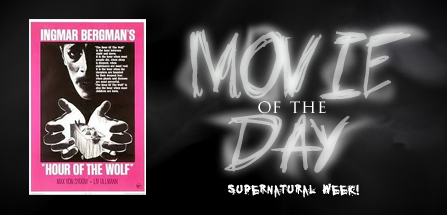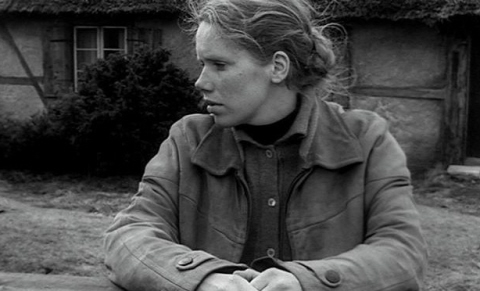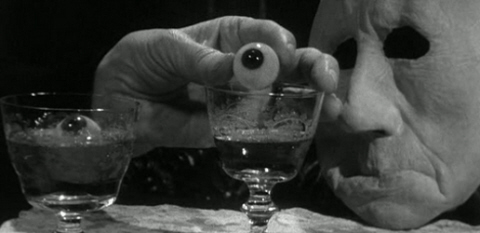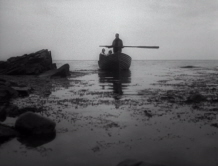
The Film: Hour of the Wolf (1968)
The Players: Ingmar Bergman (director), Max von Sydow, Liv Ullmann, Georg Rydeberg
The Premise: Reality clashes with the nightmarishly surreal at a windy, island retreat. Directly to the audience, Alma (Ullmann) recounts her husband’s slow descent into madness prior to his disappearance. Johan (von Sydow), a painter, encounters frightening visions of disturbing acts and mysterious visitors. He shares them with his worried spouse during “Vargtimmen,” or the Hour of the Wolf – a period between night and dawn when most births and deaths are said to occur. Is it, too, when nightmares become their most real?

Is it Good? The auteur toys with surrealism in a manner that promises to lose some folks. Those people will dismiss Wolf as a pretentious and disconnected mess and return to watching Battleship or Teen Mom. But their dismissal might just be the artist’s intention, as the work is steeped in the aesthetic of discomfort. This is cinema as deeply provocative literature – not easy to digest but infinitely more rewarding in its ability to disturb. Bergman is visiting familiar themes having just come off Persona. And Buñuel and Dalí accomplished much the same with the even less coherent Un Chien Andalou (that charming “razor to a woman’s eye” short film) years earlier, but here Bergman uses Johan’s nightmarish constructs to relay the terror inherent with a broken psyche.
So yeah, it’s pretty fucking scary (and good). And it’s made all the more resonant given the personal nature of the film. Bergman, feeling Wolf was hitting a little too close to home, splices in shots of the production to distance himself from his own work.
It backfires; bringing the film closer to the artist it’s really about. It’s one of those efforts that bounces in and out of dream state; never giving the viewer the necessary information that’d allow them to differentiate between what is real and what is nightmare. More disturbing is the realization that these visions dragging Johan and Alma into despair might not be nightmares but deep-seated memories.
The film was shot by Bergman-regular Sven Nykvist, widely regarded as one of the world’s finest cinematographers. Nykvist was a real master with light and shadow, and his finest work is undoubtedly in black and white. Visually, the film feels most alive in the intimate moments between Johan and Alma, where Nykvist’s beautiful imagery is complemented richly by the immersive winds and crackling branches of the film’s remote location.

Is it Worth a Look? In his own review Ebert writes about seeing the film on “Bergman’s terms,” better advice than I could offer. You’re best not questioning the film until it’s had time to marinate in your head guts. The bizarre occurrences transpiring in scenes like those at Castle von Merkens (involving a grotesque conclave of socialites) work best when you’re not asking yourself “What the fuck is going on?!” The scene with Johan and the makeup? Go with it. The answers, at least your answers, will come in due time – but not until after the experience has washed over you.
 That’s to say nothing of the overwhelming sense of dread and despair looming over the entire affair. The ending is a forgone conclusion in the first minute. That it still disturbs when it arrives speaks to the fairly heady implications said-ending proposes.
That’s to say nothing of the overwhelming sense of dread and despair looming over the entire affair. The ending is a forgone conclusion in the first minute. That it still disturbs when it arrives speaks to the fairly heady implications said-ending proposes.
Hauntingly beautiful, maddeningly inaccessible, poetically tragic; The Hour of the Wolf is classic Bergman and a bone-chilling addition to your rotation this Halloween season.
Random Anecdotes: Woody Allen’s Manhattan has a very Sven Nykvist-vibe to its visuals. The two would later work together on Crimes & Misdemeanors. My Sven Nykvist Appreciation Night would be a double feature of The Hour of the Wolf followed by Sleepless in Seattle. Aside from Nykvist, there’s a lot of connective narrative tissue there.
Cinematic Soulmates: Persona, Fight Club, Un Chien Andalou, A Nightmare on Elm Street